MAKING SENSE OF MIDDLE EASTERN RELIGIONS
Copyright 2003 CanBooks
Throughout the ancient Middle East, various religions and forms of worship sprang up or evolved at different times. Many of these are mentioned in Biblical accounts and in the records of the ancient civilizations of Egypt and Assyria and Babylon. Along with these ancient accounts, the Middle East is filled with many temples, high places, and holy places.
One of the reasons we struggle to understand ancient religion, is because today we live in a world with a vastly different worldview than the ancients did. Almost all of the ancient civilizations lived in a world-view that included a strong mix of fear-power worldview. (See Honor and Shame in a Middle Eastern Setting.)
So, in order for Nabataea.net readers to grasp the larger picture of religion in the ancient Middle East, we have put together this short paper that will explain various important aspects that must be considered.
1. Much of the ancient Middle East was animistic in nature
At the end of the 19th century, E. B. Tylor attempted to understand the difference in thinking between Europeans and other peoples living in Africa and South America. In his writings he coined the word ‘animism’ from the Latin word anima for ‘soul.’ He saw the animistic worldview as interpreting everything from a spiritual philosophy rather than a materialistic philosophy. Many sociologists of Tylor’s era saw mankind moving from an ancient worldview based on fear of the supernatural to a modern worldview based on science and reality.
Soon after this, H. W. Turner advocated the use of the term primal religion, meaning that “these religions both anteceded the great historic religions and continue to reveal many of the basic or primary features of religion.“
Dave Burnett states in his book Unearthly Powers, “Power can be understood in many ways: physical, political, economic, social, and religious. The secular western worldview tends to regard all power as originating from within the material world. … In contrast, primal worldviews see such powers not only as being real within the empirical world but as having their primary origin outside the visible world.”
In this way, those whose lives operate in the fear/power paradigm see themselves living in a physical world that co-exists and is influenced by unseen powers. These powers may be present in people, animals or even in inanimate objects like trees or mountains. In some cultures, power may be perceived in personal terms such as we would use for living beings. These powers are often regarded as having their own particular character, feeling, and ability to relate to others, and often, even have a will of their own. Like people, they may be angered, placated, or turned to in time of need.
Power is an important concept in fear-based cultures. In the Pacific Islands it is called mana, while the Iroquois of North America call it orenda, which particularly refers to the mystic power derived from a chant. The Eskimos have the notion of sila, a force watching and controlling everything. The Chinese have the concept of fung shui, or the powers within the earth and sea. In folk Islam the term baraka (blessing or holiness) embraces many of these concepts.
In most fear/power cultures, the main way of dealing with a power was to establish rules to protect the unwary from harm and procedures to appease those powers that are offended. These rules and procedures are general referred to by sociologists and anthropologists as taboo. Taboos come in the form of things like special people, forbidden or unclean foods, sacred objects, and special names. Appeasements are usually made in the form of sacrifice or dedication to the invisible powers.
These powers can take various forms, such as: ghosts, ancestors who live around people, spirits in trees or groves of trees, large rocks, mountains, totems (clans associated with certain animals or inanimate objects,) and even special shapes (crescents, blocks, triangles)
In order to deal with these powers, rituals are established which people believe will affect the powers around them. Rituals may be performed on certain calendar dates (zodiac), at certain locations (pilgrimage), at certain times in someone’s life (rites of passage), or in a time of crisis (special sacrifices). (See Forms of Worship for more information on these.)
In order to appease the powers of the universe, systems of appeasement were worked out. They varied from place to place. Some civilizations offered blood sacrifices to their gods, while some offered incense. Others offered money, some accommodated sexual intercourse with temple officials, and some offered children as sacrifices to gods. However it was done, this system of appeasement, based on fear of unseen power was the norm for their worldview.
Along with this, wherever this system of appeasement came into being, religious persons came to the forefront to control these systems. In some cases they were known as priests. In other cases they were known as holy men, prophets, witch doctors, or shamans. Whatever their title, their role is the same. They were the ones who understand the needs of the gods or demons, and they were the ones through whom the demons or gods communicated.
In every fear-based culture, the pattern was much the same. The religious officials controlled people through the use of fear. They were very effective in their roles, and as a result, whole cultures and people groups were held in the iron grip of holy men. As a result, the largest and most ornate buildings in most ancient civilizations were the temples.
2. Most locations in the Middle East had local gods It was understood by the ancients, that as they moved from place to place they had to be aware of the local gods, their customs, and their requirements. In one place the local god might take the form of a special animal. In another place it might be a mountain, in another place a God Block, or an idol. Any traveler or merchant had to be constantly on guard, lest he offended the local populace. In Egypt the cat was revered, in Edom it was the mountains. Ba’al of Palestine had his special groves of trees and high places, and many other locations had their temples and idols.
It is interesting to note that the so-called “Nabataean Pantheon” changed and evolved as the Nabataeans came in contact with other civilizations. As the Nabataeans entered Edom, the local god of the mountain (Dushares) became very important. Sea-going Nabataeans revered the dolphin, and Nabataeans in contact with the Romans incorporated Zeus into their pantheon, while those in contact with Egypt incorporated Isis. One has only to read Nelson Glueck’s book Deities and Dolphins, The Story of the Nabataeans, to quickly become lost in the maze of changing influences.
3. Gods from one location moved to other locations
When people moved, they often adopted the local gods for worship. Sometimes they took their local gods with them. An early Biblical example of this is found in the story where Rachel, Laban’s daughter steals the idols from her home to take with her to her new country. (Genesis 31:31-34)
Sometimes because of intermarriage or alliances, gods became known. We are told in I Kings 11:4-8 that because of his wives’ influences, King Solomon started to worship Ashtoreh the god of the Sidonians, Milcom the god of the Ammonites, Cheemosh the God of Moab, and Molech the god of Ammon.
Conquering armies also took their local gods with them, and taunted other people about the effectiveness of their gods. Rabshakeh, the representative of the Assyrian king (II Kings 18:17) made a public statement to all the Jews as his army stood before the city walls. “Have any of the gods of the nations delivered at all his land out of the hand of the king of Assyria? Where are the gods of Hamath, and of Arpad? Where are the gods of Sepharvaim, Hena and Ivvah? Who are they among all the gods of the countries, who have delivered their country out of mine hand?” (II Kings 18:33-35) He later brought a message to King Hezekiah of Judah (II Kings 19:8-13, 36-37) where he declared “Have the gods of the nations delivered them whom my fathers have destroyed; as Gozan and Haran and Rezeph and the children of Eden who were in Telassar?” We can also see the impact of conquering armies in the events that took place after Babylon conquered Israel. The Babylonians forced the Jews to worship Babylonian gods
In some cases, as the fame of a civilization grew, so did the worship of their Gods. This was true in ancient Egypt. As the fame of Egypt grew, the cult of Isis eventually came known everywhere.
For example: As the cult of Isis spread throughout the civilized world she acquired distinct aspects, attributes, and symbols that became common everywhere. The Egyptian goddess Isis possessed the powers of a water goddess, an earth goddess, a grain or corn goddess, and a queen of the Underworld.
By absorbing the other local Egyptian deities, Isis achieved a position for which there could be no other competition. Greek, and then Hellenistic, and finally Roman contact opened even wider opportunities for her to be identified in other pantheons under different names. Isidorus, in the 1st century BC, declared that all foreign local names for any goddesses actually referred to Isis, (as does Apuleius later on).
As Isis became the supreme goddess of heaven, earth, the underworld, and the sea, her symbols became grain, poppies, the cornucopia, the zodiac, fish, the tyche, crown, lions, ships, pinecones, and even a distinctive knot on her garment.
Other bits of information regarding the Isis cult are found in ancient literature. Apuleius notes that, at the temple to Isis at Cenchreae, the image of the goddess was veiled by curtains. Solmsen cites a reference by Tibullus to “painted panels” in temples of the Isis cult in Rome, presumably like those in the House of Mysteries and elsewhere at Pompeii.
4. Monotheistic people compared their God to rock gods
The monotheistic people (for the most part the descendants of Abraham) worshiped an unseen, all powerful god, who was present everywhere and who could not be portrayed by any sort of image. (Commandments) So monotheistic people did not use a human or animal shape for their god. Sometimes they resorted to using a geometric shape, such a square block of stone. The Israelites sometimes referred to Jehovah God as their God Block. The first mention of this is in the writings of Moses (Deuteronomy 32:4,15,18,331,37) In his song of praise, Moses compares the rocks of other nations, and calls Jehovah God his Rock. This is repeated by Hannah in her song to God in I Samuel 2:2, King David also uses this illustration in his song of victory found in II Samuel 22:2-3, 32, and Psalm 18:2.
These same monotheistic people did not have a made-up name for their god as they felt that no common name or sound could be ascribed to him. Moses asked God for his name and was simply told that the name he should use was “I AM.” (Exodus 3:13&14)
Eventually the Jewish concept of God took on several forms.
| CLASS | ENGLISH FORM | HEBREW EQUIVALENT | |
|---|---|---|---|
| PRIMARY | God | El, Elah, or Elohim (Genesis 1:1) | |
| Lord | YHWH (Jehovah) (Genesis 2:4, Exodus 34:6) | ||
| Lord | Adon, Adonai (Genesis 15:2) | ||
| Compound with El (God) | Almighty God | El Shaddai (Genesis 17:1) | |
| Most High God | El Elyon (Genesis 14:18) | ||
| Everlasting God | El Olam (Genesis 21:33) | ||
| Mighty God | El Gibbor (Isaiah 9:6-7) | ||
| Compound with Jehovah (YHWH or Lord) | Lord God | YHWH (Jehovah Elohim) (Genesis 2:4,Exodus 34:6) | |
| Lord God | Adonai YHWH (Genesis 15:2) | Lord of Hosts | |
| YHWH Sabaoth (1 Samuel 1:3) |
These names all try to describe the monotheistic God. Along with this, Exodus 20:4 tells us that the Jews did not use any shape to represent their God.
These monotheistic people often adopted the name of a powerful god to use as a means of describing their deity. E.g.: El, Allah, & God. The name of the monotheistic God changes from location to location. The root of the English word God comes from an old German deity.
In some locations the monotheistic god as added to the pantheon of other gods that people worshiped in a local area. (Babylon in Daniel 6:25-27)
5. Deities were sometimes cross identified with others
As civilizations and cultures spread, many local deities were identified with the predominant deities of the new civilization. For example, as Greek and Roman civilizations expanded, many local deities became associated with Roman parallels, and the names of temples simply changed over time. For example the chief god of an area often was associated with the Roman god Zeus, who was the god of power. Since a great deal of evidence for this is given in Nelson Glueck’s book Deities and Dolphins, The Story of the Nabataeans, we will not go into it here.
6. Holy Places
There was a common acceptance that certain locations could be ‘holy’ or ‘forbidden.’ These were usually associated with a temple, tomb, or some special geographic place, such as a great rock, mountain, special tree, or a particular valley. Many readers will remember that Moses took off his shoes at the burning bush, because of the belief that the location was Holy Ground. (Exodus 3:5) In time holy places centered around the inner sanctum of temples. Most ancient worship took place outside, in front of the temple. The temple building itself was preserved for those with the special privilege of coming into the presence of the god or idol present there. Common worshipers would meet in front of the temple, usually in a large court yard, and offerings, sacrifices, and other religious rites would take place in front of the temple, sometimes on a large altar.
There is a good example of this in the city of Petra, where a large altar dominates the courtyard in front of Qasr al Bint, or the temple to Dushares.
7. Development of the Ka’ba
Ancient cities often had many temples where worship was offered to different Gods. Tourists love to move from one temple to another in these ancient cities. (There were a number of temples in the ancient city of Petra.) While these temples were impressive, this was not the case in smaller towns and villages. Smaller, poorer centers could not afford to build one temple, let alone a series of temples to various Gods. This presented a problem when the people worshiped a pantheon of Gods. The solution was to develop a Ka’aba, or a local spot that was considered holy. Into this holy place all religious objects were gathered and put on display. In this way, a person could move around the Ka’ba, and pray before whatever god he or she chose. The worshiper could also walk in a circle around the Ka’ba, praying to all of the gods in succession.
The Ka’ba practice of the Middle East came to an end when Mohammad, the founder of Islam declared that Allah was more powerful than the other gods. His followers then went around the country destroying city temples and village Ka’bas, and elevating Allah, until he became the sole God, and thus a monotheistic religion was born. (Surah Ibrahim 13, Sura Al Hijr 4)
Also see Nabataea.net web pages on
· Honor and Shame in a Middle Eastern Setting
· Nabataean Pantheon of Gods
· The Nabataean Zodiac
· Pre-Islamic Gods in the Middle East
· Pre-Islamic Worship
Partial Bibliography
Alim, ISL Software Corporation, The Qur’an and Haddiths in electronic form. 1999
Glueck Nelson, Deities and Dolphins, The Story of the Nabataean
Holy Bible, Scofield Edition, Oxford University Press, Inc, 1909 & 1967
John’s book on Nabataean Religion,
Muller, Roland, Honor and Shame, Unlocking the Door, Philadelphia, 2002? Xlibris Publishing
Strong, James, The New Strong’s Exhaustive Concordance of the Bible, Nashville, Thomas Nelson Publishers, 1996



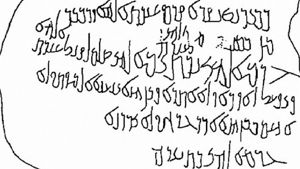
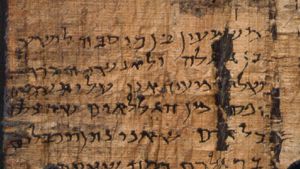
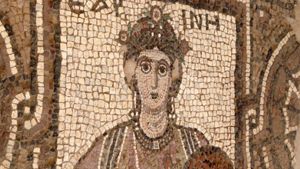

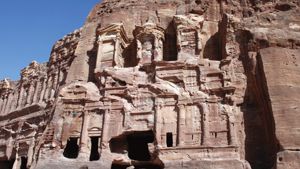
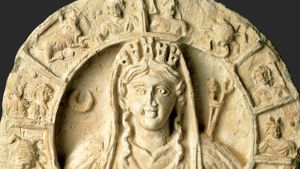
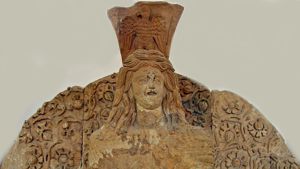
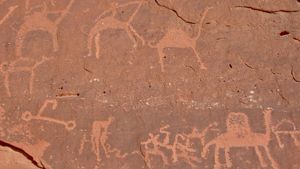
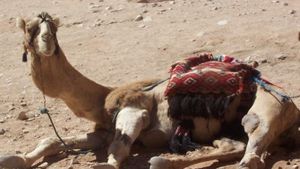
Page Discussion
Membership is required to comment. Membership is free of charge and available to everyone over the age of 16. Just click SignUp, or make a comment below. You will need a user name and a password. The system will automatically send a code to your email address. It should arrive in a few minutes. Enter the code, and you are finished.
Members who post adverts or use inappropriate language or make disrespectful comments will have their membership removed and be barred from the site. By becoming a member you agree to our Terms of Use and our Privacy, Cookies & Ad Policies. Remember that we will never, under any circumstances, sell or give your email address or private information to anyone unless required by law. Please keep your comments on topic. Thanks!